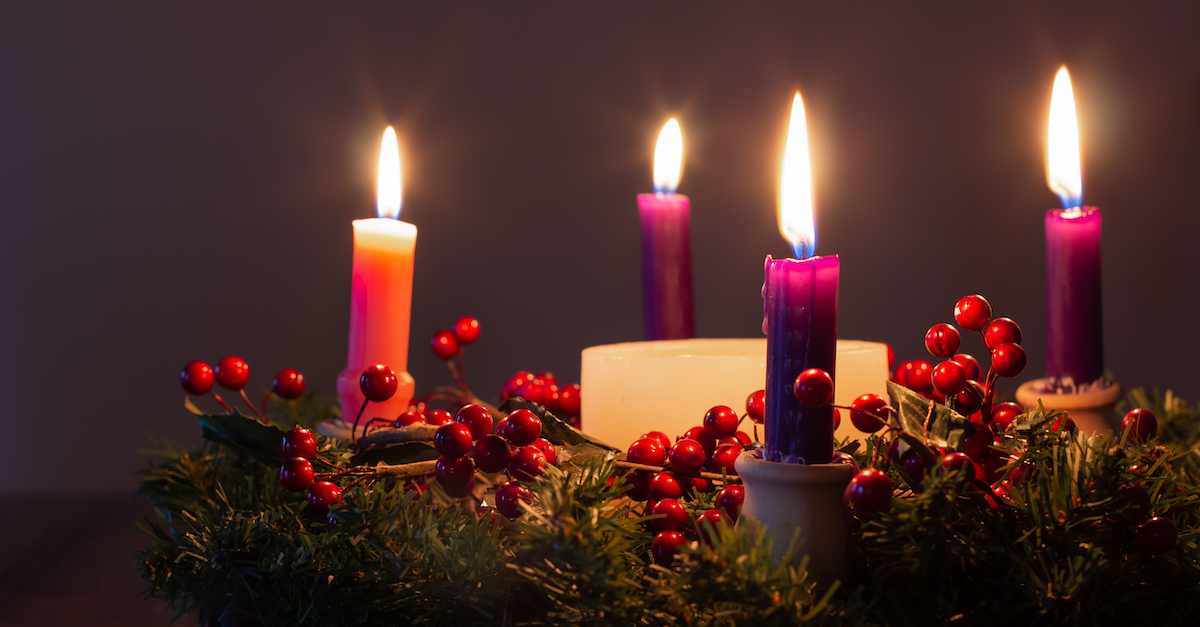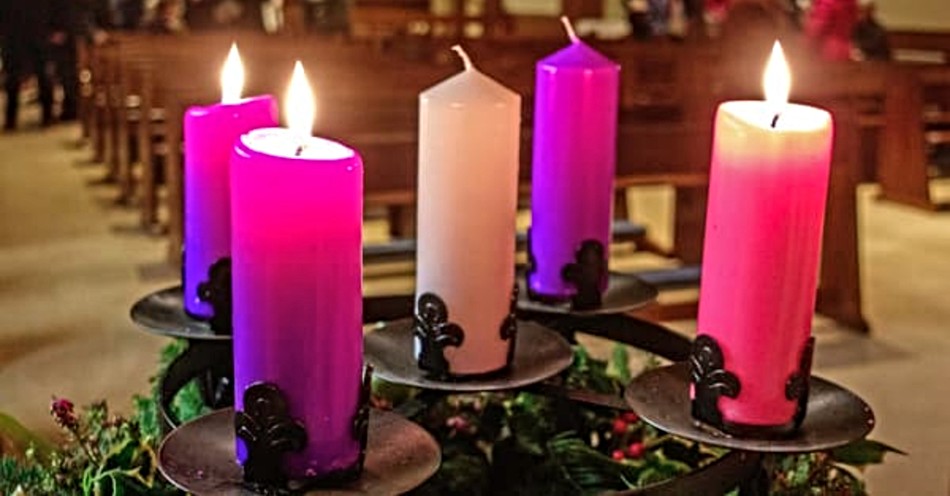Welcome to the vibrant celebration of Gaudete Sunday, a beloved day in the Advent season that fills our hearts with joy and anticipation. As we journey towards Christmas, this unique Sunday stands out as a beacon of joy and hope. In this article, we'll explore the rich history, traditions, and significance of Gaudete Sunday, inviting you to discover the true essence of this festive occasion.
What is Gaudete Sunday?
Gaudete Sunday is the third Sunday of Advent in the liturgical calendar of Western Christianity, including the Roman Catholic Church, the Anglican Church, Lutheran Churches, and other mainline Protestant churches.
The Christian holiday takes its common name from the Latin word Gaudete ("Rejoice"), the first word of the introit of this day's Mass:
Gaudete in Domino semper: iterum dico, gaudete. Modestia vestra nota sit omnibus hominibus: Dominus enim prope est. Nihil solliciti sitis: sed in omni oratione et obsecratione cum gratiarum actione petitiones vestræ innotescant apud Deum. Benedixisti Domine terram tuam: avertisti captivitatem Jacob.
This may be translated as: "Rejoice in the Lord always; again I say, rejoice. Let your forbearance be known to all, for the Lord is near at hand; have no anxiety about anything, but in all things, by prayer and supplication, with thanksgiving, let your requests be known to God. Lord, you have blessed your land; you have turned away the captivity of Jacob." Philippians 4:4-6; Psalm 85
History of Gaudete Sunday
Gaudete Sunday, celebrated on the third Sunday of Advent, holds a significant place in the liturgical calendar, marking a joyful midpoint in the season of anticipation before Christmas. The term "Gaudete" is derived from the Latin word for "rejoice," taken from the entrance antiphon for the day, which begins with the words "Gaudete in Domino semper" or "Rejoice in the Lord always."
The history of Gaudete Sunday is deeply rooted in Christian tradition. The observance dates back to the medieval period when the church recognized the need to balance the penitential nature of Advent with moments of joy and hope. The third Sunday of Advent serves as a brief respite from the more somber aspects of the season, allowing believers to rejoice in the imminent arrival of the Christ child.
The liturgical color for Gaudete Sunday is rose or pink, symbolizing joy and a departure from the traditional purple associated with penance and preparation. This distinctive color choice is a visual cue to the faithful that a shift toward celebration and gladness is underway.
Gaudete Sunday is also marked by the lighting of the third candle on the Advent wreath, often known as the "Gaudete Candle" or the "Candle of Joy." This candle represents the joy that Christians experience as they draw closer to the celebration of the birth of Jesus.
In essence, Gaudete Sunday encapsulates the dual nature of Advent – a time for reflection and repentance, balanced with anticipation and rejoicing in the promise of redemption. It serves as a reminder that, even in the midst of our preparations, there is joy to be found in the expectation of the Savior's arrival.

Traditions of Gaudete Sunday
Gaudete Sunday in Christianity is marked by various traditions that emphasize the theme of joy and anticipation as believers prepare for the celebration of Christ's birth. Here are some common traditions associated with the third week of Advent:
Rose or Pink Candle: On the Advent wreath, a distinctive rose or pink-colored candle is lit on Gaudete Sunday. This candle is often called the "Gaudete Candle" and represents the joy of reaching the midpoint of Advent. The use of rose or pink symbolizes a departure from the penitential purple color and adds a touch of festivity.
Liturgical Colors: The priest and clergy may wear rose-colored vestments during the Gaudete Sunday Mass to symbolize the joyful nature of the occasion.
Scripture Readings: The readings during the Gaudete Sunday liturgy focus on joy and rejoicing. The Philippians 4:4-7 passage, which begins with "Rejoice in the Lord always," is a common selection for the day.
Gaudete Hymns and Songs: Churches often incorporate hymns and songs that convey a sense of joy and celebration during Gaudete Sunday. Musical selections like "Gaudete" or other joyful Advent and Christmas carols enhance the worship experience.
Joyful Decorations: Some churches and households may decorate with an emphasis on joy. This could include floral arrangements, banners, or other decorations that reflect the festive spirit of Gaudete Sunday.
Special Prayers: During Gaudete Sunday, special prayers and liturgical elements may be included in the worship service that highlight the themes of joy, hope, and anticipation.
Acts of Kindness: In the spirit of joy and giving some Christian communities use Gaudete Sunday as an opportunity to engage in acts of kindness and charity. This could involve outreach to those in need or special community service projects.
Family Celebrations: In homes, families may mark Gaudete Sunday by coming together for a special meal or time of reflection. Lighting an Advent candle, reading Scripture, and sharing in joyful conversations about the upcoming Christmas celebration can be part of this observance.
Importance of Gaudete Sunday
Gaudete Sunday holds special significance within the liturgical calendar of Christianity, particularly during the Advent season. Here are several reasons why Gaudete Sunday is considered important:
Joyful Anticipation: Gaudete Sunday serves as a moment of joyful anticipation in the Advent season. As the name suggests ("Gaudete," meaning "rejoice" in Latin), this Sunday encourages believers to take a break from the penitential aspects of Advent and rejoice in the imminent arrival of Jesus Christ.
Midpoint of Advent: Gaudete Sunday marks the midpoint of the Advent season, symbolizing that the period of preparation is halfway through. This juncture allows Christians to reflect on the progress of their spiritual journey during Advent and look forward to the celebration of Christ's birth.
Liturgical Emphasis on Joy: The liturgical color of rose or pink used on Gaudete Sunday, both with vestments and the lighting of the Advent candle, emphasizes the theme of joy. This visual cue helps to distinguish Gaudete Sunday from the other Sundays in Advent, which are typically associated with the color purple representing penance and reflection.
In summary, Gaudete Sunday is a pivotal moment in the Advent season, providing a unique opportunity for believers to pause, rejoice, and refocus their hearts on the joyous event of Christ's coming. It adds depth and meaning to the overall Advent journey.
Bible Verses for Gaudete Sunday
Here are some Bible verses that are often associated with the themes of joy and rejoicing, making them suitable for Gaudete Sunday:
Philippians 4:4-5 (NIV):
"Rejoice in the Lord always. I will say it again: Rejoice! Let your gentleness be evident to all. The Lord is near."
Isaiah 12:2-3 (NIV):
"Surely God is my salvation; I will trust and not be afraid. The Lord, the Lord himself, is my strength and my defense; he has become my salvation. With joy, you will draw water from the wells of salvation."
Zephaniah 3:14-15 (NIV):
"Sing, Daughter Zion; shout aloud, Israel! Be glad and rejoice with all your heart, Daughter Jerusalem! The Lord has taken away your punishment; he has turned back your enemy. The Lord, the King of Israel, is with you; never again will you fear any harm."
Luke 2:10-11 (NIV):
"But the angel said to them, 'Do not be afraid. I bring you good news that will cause great joy for all the people. Today in the town of David a Savior has been born to you; he is the Messiah, the Lord.'"
Psalm 33:20-21 (NIV):
"We wait in hope for the Lord; he is our help and our shield. In him our hearts rejoice, for we trust in his holy name."
Photo credits: Getty/FREDERICA ABAN; Getty/Kara Gebhardt
Christianity.com's editorial staff is a team of writers with a background in the Christian faith and writing experience. We work to create relevant, inspiring content for our audience and update timely articles as necessary.
This article is part of our larger Christmas and Advent resource library centered around the events leading up to the birth of Jesus Christ. We hope these articles help you understand the meaning and story behind important Christian holidays and dates and encourage you as you take time to reflect on all that God has done for us through His Son, Jesus Christ!
What Is Advent: Meaning, History, and Traditions
Advent Prayers for Friends, Family, and More
What Is an Advent Wreath and How to Use One?
The History of Santa Claus: Origin of St. Nicholas
Christmas Bible Verses & Scripture Story
What is Christmas? True Meaning and Holiday History
Christmas Eve History and Traditions
Why Gold, Frankincense, and Myrrh?
When Was Jesus Born? Why December 25th
Where Was Jesus Born?



_639003522088907085.jpg)